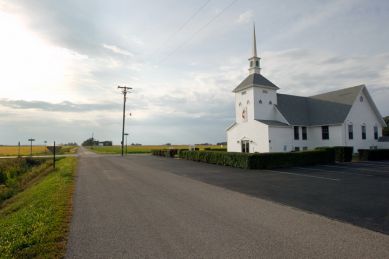Focus on Community Impact More Than Membership, Say Rural Churches

The vitality of a local church should be assessed more by taking into account the capacity of a congregation to transform its community than by the number of its members, a fellowship of rural churches is proposing ahead of the 2012 United Methodist Church General Conference.
"The reality is the focus seemingly is almost always on the fast-growing areas where there are lots of people," says Rev. Roger Grace, president of the United Methodist Rural Fellowship, according to a report by the United Methodist Church News Service.
"If churches want to be centers for making disciples … they can do that with a small, core group of people or they can do that as a larger church," he said.
Rural churches represent 20,000 of the denomination's 33,500 churches, according to the report. The fellowship has proposed deleting language that makes small urban churches more vulnerable to closure. Grace says small urban churches share more similarities with urban churches than with suburban congregations.
Rural churches within the United Methodist Church are wary "of what they're calling metrics" as a way to measure vitality in a congregation, says Rev. Ed Kail, a field outreach minister in Iowa and a United Methodist elder since 1979, according to the report.
"Folks in small rural churches have gotten kind of suspicious of numbers," he said, explaining that statistical trends tend to be used against them.
He says worship attendance or professions of faith "can be fudged or interpreted in different ways" and may not be accurate drivers of vitality.
"In the end, the only driver is the spirit of God active in the lives of the people," he said.